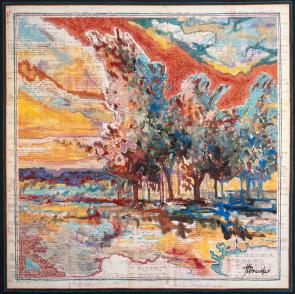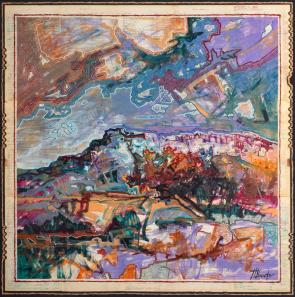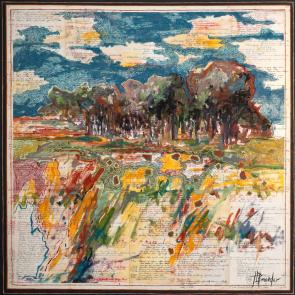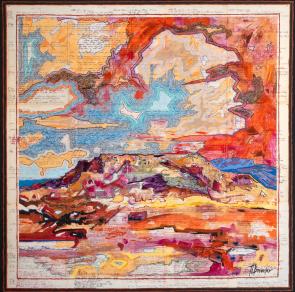Terry Browder is a Contemporary Landscape Painter who grew up in a farming community in Southwestern Oklahoma, but has lived in Abilene, Texas for over 50 years. His ancestors homesteaded on the prairies of Western Oklahoma and Texas, so his love for the land, scenery, mesas and tree groves is ingrained in his heritage and is part of his aesthetic DNA.
Terry began painting in high school and studied privately with Dord Fitz, owner of the prestigious Dord Fitz Gallery in Amarillo, Texas, during the late 1960s and early 1970s. Fitz's close relationship with several of the New York Abstract Expressionists such as Elaine De Kooning and Louise Nevelson exposed Terry at an early age to the expressive world of midcentury modern art. A pivotal experience for Terry during these early years was his opportunity to attend a private workshop with Louise Nevelson, one the most renown sculptors of the 20th century. Terry is formally trained and completed a BFA in Painting and an MA in Art Supervision, both from Abilene Christian University, during the 1970s.
Terry's Abilene studio and home is a 100-year-old Pueblo Revival called Adobe Walls Studio. The Southwestern architecture and aesthetic have greatly influenced his work, and it functions as his private gallery display space, as well. His lifelong interests and experiences in interior design have enhanced his ability to assist collectors with placing and displaying their purchases, and his work is found in private homes, corporate settings and several major medical centers.
A unique approach in materials has been Terry's use of vintage ledgers and historic land grant deeds, glued to canvas as a substrate for his acrylic paintings. His abstracted landscapes are representational, but reflect the influences of his early training in modern art. His mark making techniques incorporate a contrasting yin-yang of expressive brush strokes and controlled, methodical line work.
Browder has adopted the linear brushwork inspired by the spiral, Fibonacci Sequence-type motifs found in petroglyphs and other types of prehistoric art. The resulting paintings are expressive and energetic but also deliberate and detailed. His work has broad appeal to both traditional collectors of Southwestern Art and to those who have a more contemporary design aesthetic.




